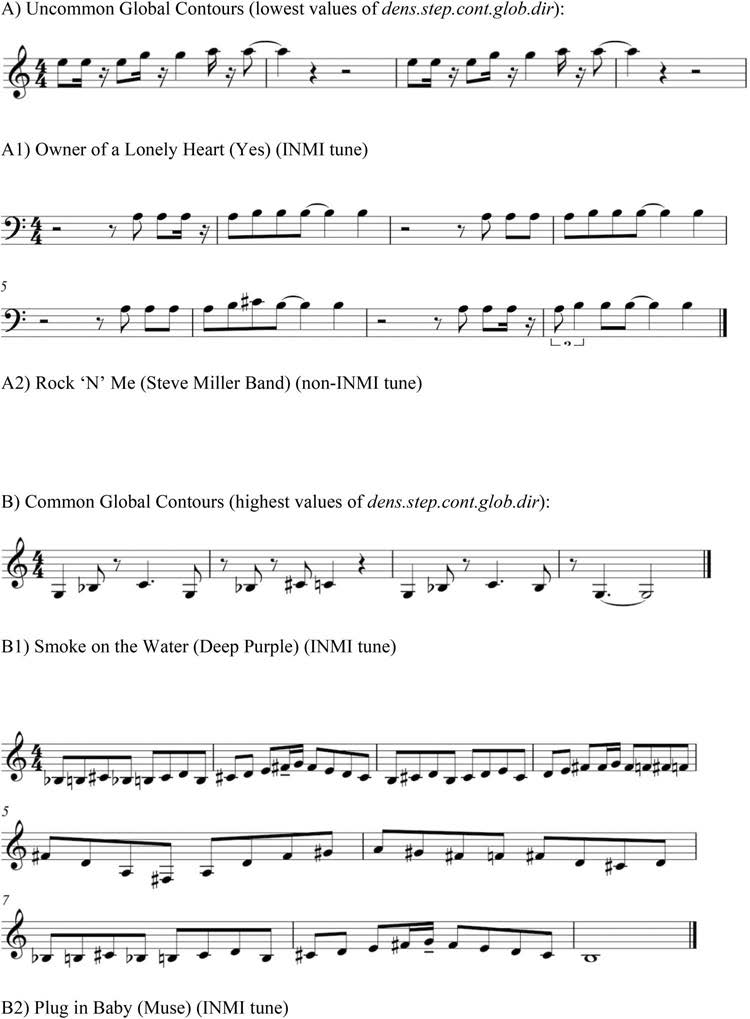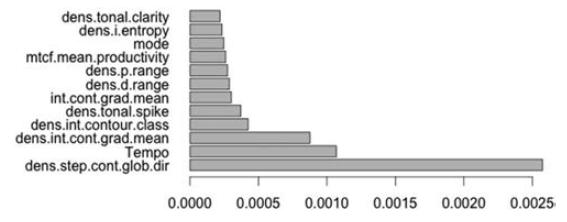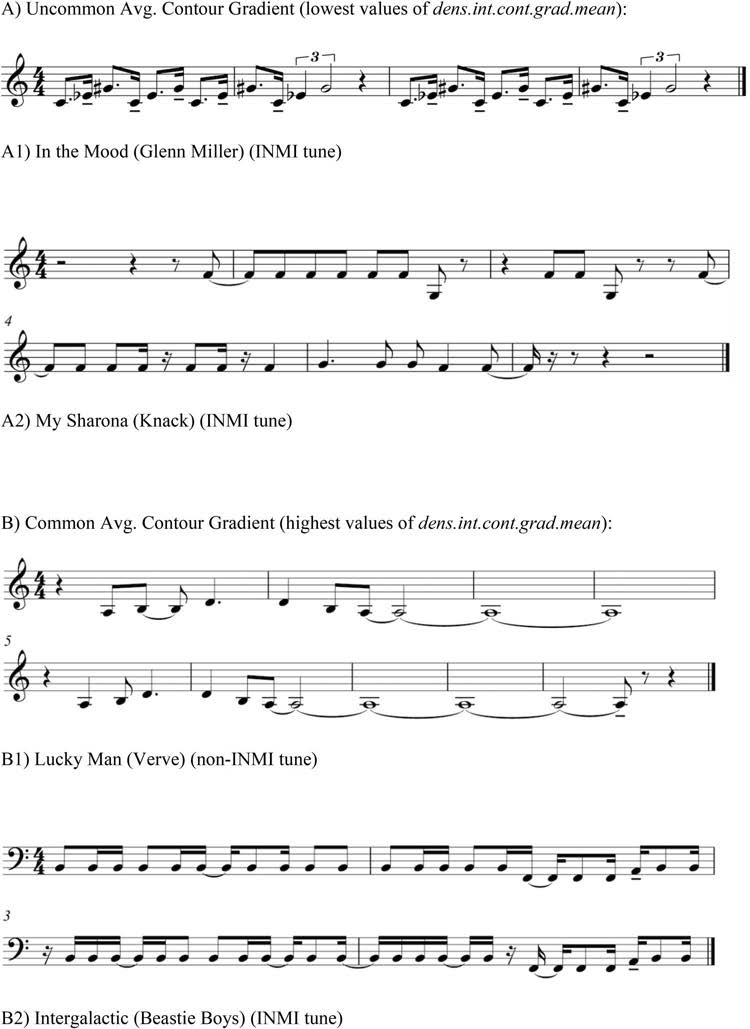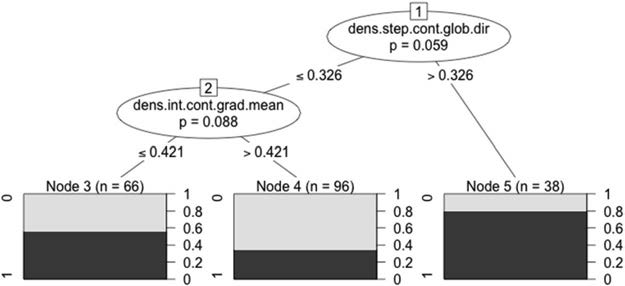Created software predictor intrusive ringtones
Glen Miller's composition "In The Mood" showed a record value in the parameter of unexpected gradients between places where the melody changes direction. This is one of the three main predictors in the decision tree for obsessive melody.
Why are some tunes stuck in my head? These sticky songs seem to have some special properties, forcing a person to hum or whistle them. In psychology, they are known as obsessive melodies (in the scientific literature, Involuntary Musical Imagery or INMI). By definition, such melodies involuntarily and spontaneously repeat in the head even after playback.
This phenomenon has been studied in considerable detail in the scientific literature, including the accompanying phenomenology, the circumstances of the occurrence of INMI, and the prerequisites for the occurrence of INMI in the individual brain. In general, scientists have come to believe that INMI is a fairly common everyday occurrence, and various situational factors can be triggers for playing different types of music in the form of INMI.
Previous studies have confirmed several obvious patterns. For example, that the frequency and recognition of a song increase the likelihood of INMI, and the most common INMI trigger is a recent melody listening.
')
Despite long-term interest in this problem, the key issue is still largely incomprehensible. Why do some songs often get stuck in my head, and others less often? This question is especially complicated, because the manifestations of INMI are influenced by a number of both intramuscular factors (characteristics of a melody, lyrics), and a number of extramusical, external factors (the context of the manifestation of INMI, previous associations with a song, individual understanding of the meaning, etc.).
For the first time, the musical characteristics of INMI were first studied by a group of researchers led by Finkel in 2010, the results were published in the work “Involuntary musical imagery: Investigating musical features that
predict earworms " . In this and the subsequent study of 2012, 29 INMI songs and 29 songs were compared that did not belong to the class of obsessive melodies. These songs were analyzed in FANTASTIC (Feature ANalysis Technology Accessing STatistics) special music analysis software. The result showed that obsessive melodies usually contain notes of longer duration and shorter intervals in pitch.
Researchers Williamson and Mullensifen later suggested that such characteristics of obsessive melodies facilitate their singing. They also noticed that people who sing more often experience more frequent and longer INMI at the same time.
Now a group of researchers from the UK, Germany and Denmark has published a new scientific paper , in which it expands the study carried out by its predecessors using a larger sample of respondents (3,000 people) and more melodies (200).
First of all, the respondents filled out a questionnaire in which they indicated the names of the songs, which they referred to as obsessive melodies. These songs were asked to sort by obsession. According to the survey results, a list of the most intrusive melodies was compiled for this audience. Threefold mention in the Top-9 of the most intrusive melodies of compositions by the intellectually gifted singer under the stage name Lady Gaga attracts attention.
1. "Bad Romance" , Lady Gaga, 33 mentions.
2. "Can't Get You Out of My Head" , Kylie Minogue, 24 mentions.
3. "Don't Stop Believing" , Journey, 21 references.
4. "Somebody That I Used to Know" , Gotye, 19 references.
5. "Moves Like Jagger" , Maroon 5, 17 mentions.
6. "California Gurls" , Katy Perry, 15 references.
7. "Bohemian Rhapsody" , Queen, 14 references.
8. "Alejandro" , Lady Gaga, 12 references.
9. "Poker Face" , Lady Gaga, 11 references.
The researchers then tried to identify the intramusical features of the INMI songs. MIDI tunes are extracted from the Geerdes MIDI music database with all the characteristics of each. In total, 101 INMI songs were mentioned in the questionnaire. The researchers also took into account which fragment of the song is most often recalled by survey participants. Accordingly, this particular MIDI fragment was chosen for analysis. If the respondent did not indicate a specific part of the song, then they took the chorus for the study, as in previous studies it turned out that it is the chorus that is most often found in INMI. Statistical analysis of the fragments was performed using the same software FANTASTIC.
To compare the musical characteristics of INMI with respect to non-INMI, the random forest method (“random forest”) was used — an algorithm for machine learning, which consists of using an ensemble of decision trees. The structure of the decision tree is the "leaves" and "branches". At the edges (“branches”) of the decision tree, attributes are recorded on which the objective function depends, in the “leaves” the values of the objective function are recorded, and in the remaining nodes there are attributes by which the cases differ.
The decision tree has shown that obsessive melodies are more likely to become songs with the same general melodic pattern for pop music. The illustration shows examples of melodies with the highest values of a variable that corresponds to a general melodic pattern (B1 and B2), as well as examples of melodies with the most unusual melodic pattern (A1 and A2).

The factor of the overall melodic pattern is the most important of the 12 factors that distinguish an obsessive melody from a regular song. All other factors and their importance are indicated in the table compiled from the decision tree.

In fact, only the first three factors from this list satisfy the criteria of importance to talk about the difference between INMI songs and ordinary songs. In addition to the general melodic pattern, this is a relatively fast rhythm and the most unexpected gradients between places where the melody changes direction (average gradients between melodic turning points), as shown in the following illustration in examples A1 and A2.

Scientists have compiled a new decision tree taking into account only these three factors. This model allows you to predict whether a particular melody will become intrusive or not, with a reliability of 62.5%.

Decision tree using three predictors
Further improvement of the model is likely to automatically generate melodies that will almost guaranteed to belong to the INMI class, that is, reliably get stuck in the listener's head. This will automatically generate music hits and millions of hits on YouTube to those authors who first learn how to correctly apply this model.
On the other hand, ordinary users can use this predictor of intrusive melodies as a kind of spam filter, automatically blocking the playback of tunes, which then will be difficult to get out of my head.
Scientific article was published on November 3, 2016 in the journal Psychology of Aesthetics, Creativity and the Arts (doi: 10.1037 / aca0000090).
Source: https://habr.com/ru/post/398829/
All Articles